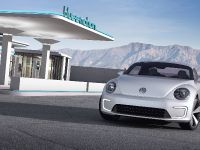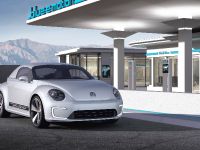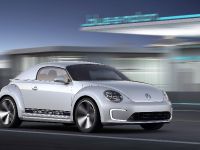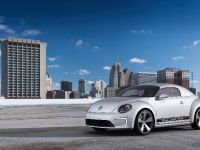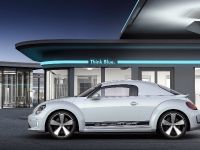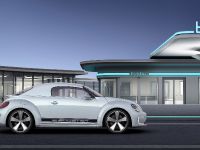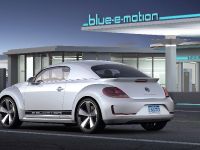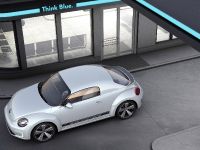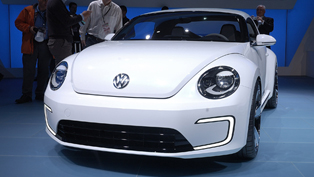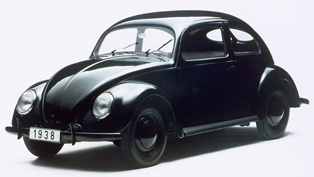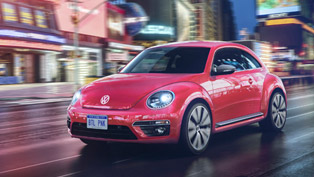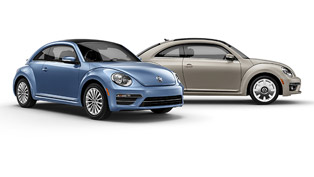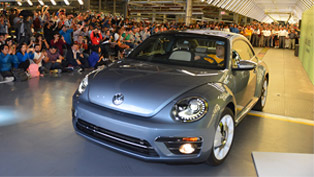2012 Volkswagen E-Bugster Concept makes debut in Beijing
2012 Volkswagen E-Bugster Concept is the successor of the emblematic Beetle and it will be exhibited for the first time in Asia during Auto China in Beijing. There it will show how sportiness can also be transferred to a Beetle with pure electric drive.
The Concept vehicle is a two-seat Beetle speedster, 85 kW in power, and able to accelerate from 0 to 100 km/h in 10.8 seconds. The surprise here is that it is able to produce zero emissions.
To go further into details, the central electric module of this Volkswagen has an innovative design. It weighs just 80 kg. The electric motor produces energy which is stored in a lithium-ion battery whose modules are housed in a space-saving location behind the front seats.
The battery has an energy capacity of 28.3 kWh. In kilometers this means that the vehicle is able to cover the range of at least 180 km in the urban world.
In addition, Volkswagen has included its special quick charging function, thank to which the battery can be ‘refuelled' within 35 minutes at suitable charging stations. Of course, this battery can be charged at the convenience of the home environment through a conventional electric outlet.
The interface for the charge cable is located behind the normal ‘fuel door' near the C-pillar. Due to the new Combined Charging System it is possible now for the E-Bugster to be ‘filled up' flexibly via one interface using any available charging modalities, such as single-phase charging with AC current or ultra-fast DC charging at charging stations (quick charge).
Exactly how much energy the driver is requesting with the ‘electric pedal' can be observed in a power display. In addition, there are also featured instruments which include a driving range indicator and a display showing the current charge state of the battery.
Furthermore, there is also an instrument in the new Bugster, which shows the intensity of battery regeneration. What this means in short is that the regeneration actually is the recovery of braking energy. When the driver's foot leaves the accelerator pedal and/or brakes, kinetic energy is transformed into electricity, which in turn is collected in the battery.
This serves as a means to increase the driving range of the E-Bugster.
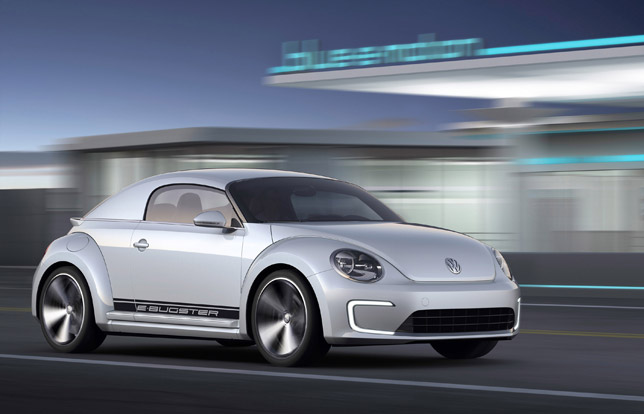
Furthermore, the 2012 Volkswagen E-Bugster is in fact a sports car. This is due to its height of less than 1,400 mm, which is about 90 mm less than that of the hard top Beetle. In details, the E-Bugster's width (1,838 mm) grew by 30 mm, while its length (4,278) remained the same as that of the production car.
Another highlight here is that the E-Bugster has unique dynamic styling, due to a lot of new styling elements included in the model.
Looked from the front, it is the swept-back and wide windscreen that catches the eye. The E-Bugster's glass extends to a point above the A-pillars.
In addition it includes LED headlights, highly customized, daytime running lights to the left and right of the central air intake as bands of LED lights in a C-shape. All these styling elements can be seen again in a transformed form as reflectors in the rear bumper.
The rear windscreen of the E-Bugster is extremely wide as well.
On the other hand a side view of the Bugster gives the observer the image of swept-back windows and a low roof. In addition, the designers lengthened the chrome strip of the lower window border towards the rear and it now runs once around the car, from A-pillar to A-pillar.
Moreover, this electrified Volkswagen runs on 20-inch ‘Twister' wheels, which are equipped with 235/35 R 20 tyres.
What is left is of course the interior, which is spectacular. First of all it includes a combination of high-tech equipment. Secondly the dynamic performance reflected through the sport seats and a continuous centre tunnel in body colour.
The door handles and the belt guides are made of aluminium, and in addition to this the lightweight construction styling of the steering wheel also creates a direct connection between the exterior and interior.
Through the Start button, the driver not only activates the drive system but also puts a light show into motion. What happens is basically this: first, the interior is bathed in a white light, which eventually is substituted with blue light.
Next, it begins as a light pulse in the instrument cluster, from which the light emanates as a thin line of light. The latter is just one millimetre wide and courses into the door window sills and around the air nozzles.
Source: Volkswagen
